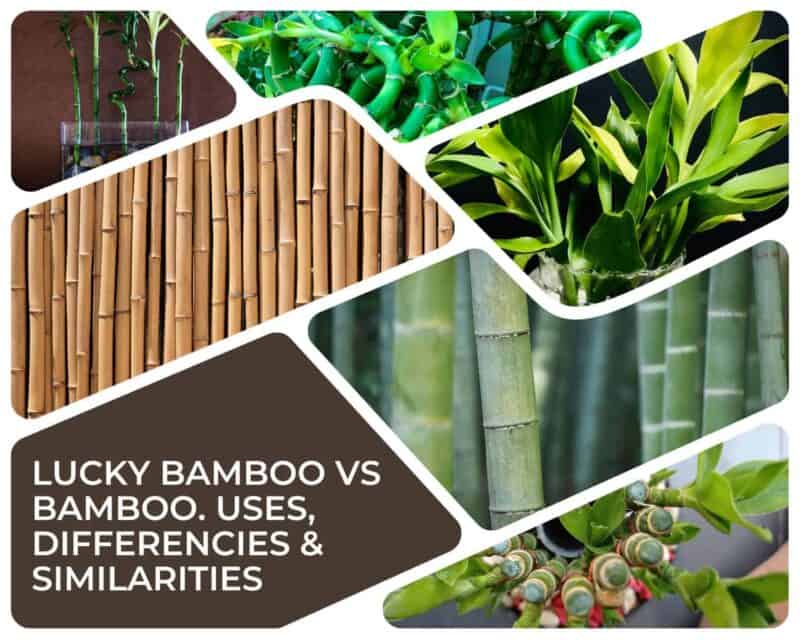Do you know the difference between lucky bamboo and bamboo? They are two different plants! Lucky Bamboo is scientifically named Dracaena sanderiana and grows in water. It originated in Southeast Asia, probably Thailand. On the other hand, bamboo generally grows in soil.
When looking for an aquatic plant, you have two choices: lucky bamboo or bamboo. Lucky bamboo and bamboo are very similar in their care but have a few differences.
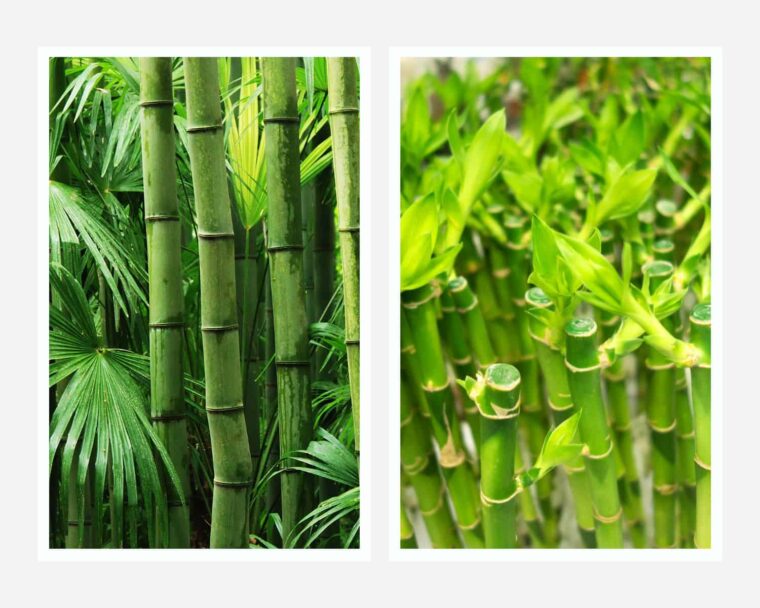
What is the difference between lucky bamboo and bamboo?
Both are a form of aquatic plants, so they both originate in water, but they’re certainly not the same. Whether you want to know the difference between bamboo and lucky bamboo or the different species of plants that fall under the name “bamboo.” Below are some of the key differences between bamboo and lucky bamboo.
- Names: Lucky bamboo is a type of bamboo plant that is popularly known as a good luck charm. They are often given as gifts or displayed in offices and homes to bring good luck to their owners or occupants. Lucky bamboo plants are also known as money plants or feng shui plants because they are believed to attract wealth and prosperity into your life. Bamboo is a grass that grows in large clumps, while lucky bamboo is a palm that can grow to be up to 10 feet tall when it’s mature.
- Origin: Lucky bamboo is a type of aquatic plant that has been used as an ornamental plant in Asia for centuries. It grows in water and has long stems with many leaves attached to them. The plant has become popular in the West over the last few years, especially among people who want to add plants to their home decor. Bamboo, on the other hand, is an actual plant native to Asia. Bamboo grows quickly in warm climates and requires little maintenance once it’s established. Bamboo is often used as a decorative plant because of its beautiful appearance and durability.
- Care and Maintenance: Lucky bamboo is a type of plant that grows from a stem rather than a root system. It is often used as an ornamental plant in homes and offices because it requires little care and maintenance, it is a slow-growing plant that requires very little maintenance or care. It grows quickly under the right conditions, with some varieties reaching up to 6 feet tall in just a few years! whereas Bamboo plants commonly grow in water, so you will need to change the water regularly to keep the plant healthy.
- Produce: Bamboo produces new growth every year while lucky bamboo will produce new growth only when it is repotted; lucky bamboo may also produce new plants by dividing its crowns into two or more parts.
- Growth environment: Bamboo grows best in full sun but will tolerate partial shade as well; lucky bamboo needs bright indirect light or even direct sunlight to thrive properly.
- Growth: Bamboo grows in clumps with each stem capable of producing branches on its own. Each branch will eventually produce clusters of new shoots called “bamboo poles” which can be harvested at any time during their growth cycle. Lucky bamboo grows from one central stem that produces buds.
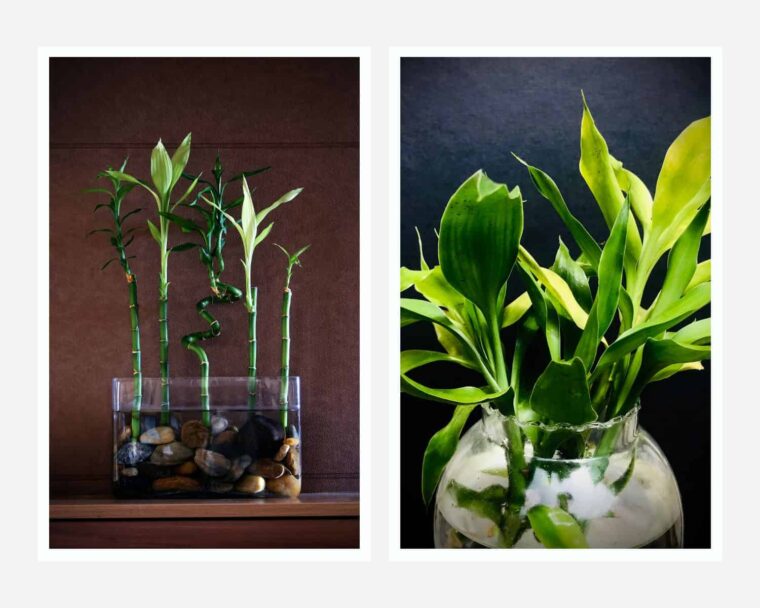
Pros and Cons of Lucky Bamboo and Bamboo
Advantages of lucky bamboo
Lucky bamboo is a rare aquatic life form that has been around for thousands of years. Many people are familiar with this plant but don’t know much about it. Lucky bamboo is an inexpensive way to add color and interest to your home or office. It can also promote health and happiness. Here are some of the benefits of lucky bamboo:
- Easy Care: Lucky bamboo is one of the easiest plants to care for because it does not need soil or sunlight. All you have to do is add water once a week until the water drains from the bottom of the container. You don’t have to worry about over- or under-watering this plant either; it will absorb as much water as it needs and will tell you when it’s thirsty by wilting slightly around its leaves.
- Decorative Nature: Lucky bamboo has an attractive appearance that can add visual appeal to any room in your home. The long green stalks with white stripes are very attractive, but they also make an interesting sound when they move in the wind or when touched by someone walking by.
- Low Maintenance: Another reason why lucky bamboo makes a great choice for those who don’t have much time on their hands is that it doesn’t require much maintenance at all! As long as you keep your plant watered and clean its container every few months, that’s all there is to keeping your lucky bamboo alive and well!
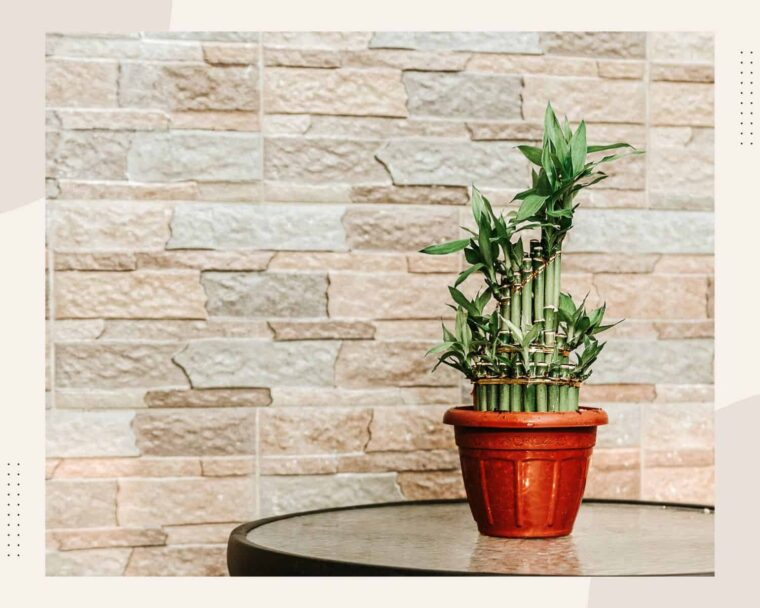
Disadvantages of lucky bamboo
Despite its pros, there are a few cons of lucky bamboo that you should know about. Below are some;
- Lucky bamboo can become invasive: Most people who buy lucky bamboo intend for it to stay small, but sometimes the plant will grow out of control and take over the whole house. This can cause problems if you’re renting or if there aren’t other plants around that can provide support for the tall stems.
- Lucky bamboo plants can cause allergic reactions in people who are sensitive to pollen or dust mites. This is because they shed pollen and produce fine particles that settle on nearby surfaces, where they can be inhaled by people who are sensitive to them.
- They’re not easy to find: If you want to get your hands on some lucky bamboo plants, you’ll likely need to go out of your way to get them. Lucky bamboo is not sold everywhere you’d expect to find houseplants — including most big box stores and even most garden centers.
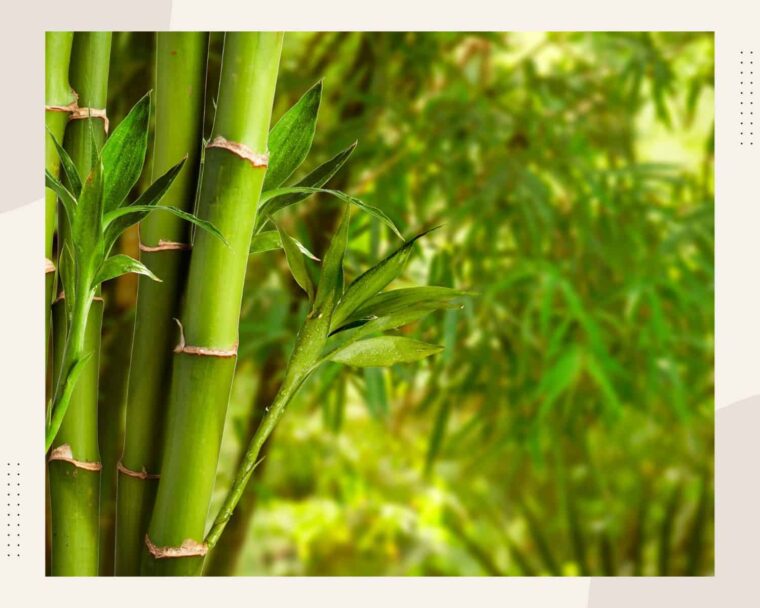
Advantages of Bamboo
Bamboo is a great choice for flooring due to its natural beauty, durability, and renewable nature. Bamboo floors have a very unique look that can blend well with several different decors. Let’s look at why bamboo is the ideal choice for your home’s flooring.
- Sustainable: Bamboo is a fast-growing, renewable resource that can be harvested every 4 years or so. It grows quickly and doesn’t require pesticides or fertilizers. Bamboo requires very little maintenance, making it easy to grow in many different climates around the world.
- Strength: Bamboo is one of the strongest plants on Earth, with a tensile strength comparable to steel (but with less than half the density). As a result, it’s used in everything from building materials to sports equipment (e.g., baseball bats). Even more impressive: bamboo can withstand high temperatures without any structural damage!
- Source of food: It contains more protein than most other plants. It is also rich in calcium, phosphorus, and iron content. Bamboo shoots are eaten as vegetables in some parts of Asia like China and Japan where they are considered a delicacy by some people because of their unique taste
- Environmental friendly: It grows on marginal land unsuitable for other crops. It does not require much water or fertilizer, and it can be grown without pesticides or herbicides.
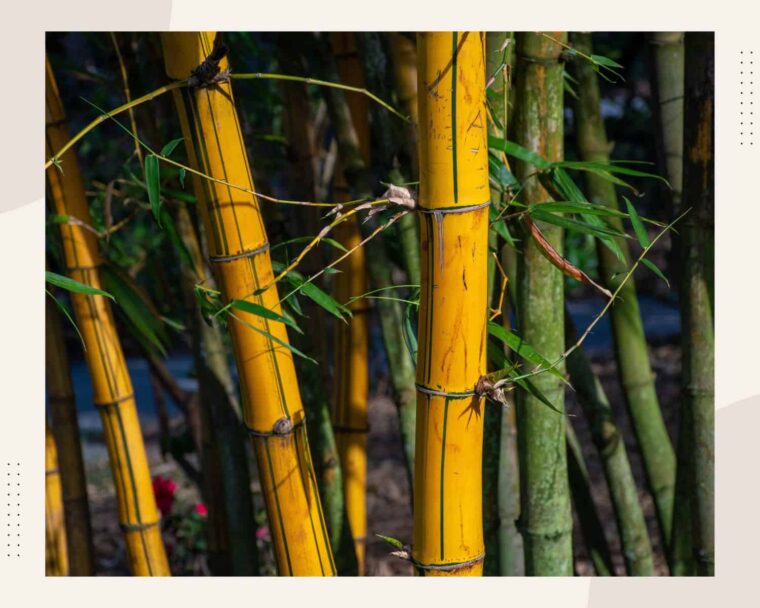
Disadvantages of bamboo
Bamboo is a type of wood with lots of uses. It’s one of the fastest-growing plants on Earth. It’s also used for construction and paper production, among other things. But did you realize all its disadvantages? Here are some that you should know about
- It is expensive. Bamboo flooring can cost twice as much as hardwood floors. This is because of its high demand and limited supply.
- It isn’t as durable as hardwood floors. While bamboo has greater tensile strength than most woods, it’s still more susceptible to cracks in high-traffic areas or areas with high moisture levels.
- It is not very stable. Bamboo is highly reactive to changes in humidity and temperature, which can cause warping and split over time.
Conclusion
There are plenty of differences between the two types of bamboo, and it depends on the personality of the owner and which one they prefer. However, if someone is looking for an easy-going plant they should probably stick with lucky bamboo. This is also a better option if you’re planning to display this in an area with a lot of foot traffic as there isn’t a large risk of breakage with lucky bamboo. On the other hand, if you want something more unique that will grow larger over time, then you might want to consider regular bamboo that could eventually grow up to 180 feet tall!
